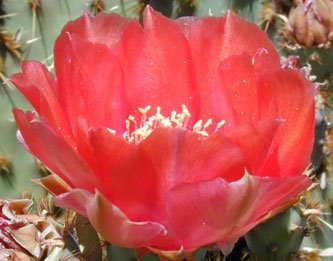
Every small town in Kansas has a billboard on the freeway advertising their antique shops. Some of these towns, like Paxico, don’t even have a place to eat except maybe a Subway in the gas station at the interstate. Paxico is right on the railroad of course, which the interstate wisely followed across the state. The RV park entrance had a number of small buildings and sheds which were thickly plastered with old license plates, signs and other relics of a bygone era. The long driveway back to the RV sites was separated from the rail line by a fence which was decorated with an amazing number of old wagon wheels and a display of rusty farm implements continued the theme. The best memento of times gone by, however, was the old Rock Island Line depot, seen in this image.

In the spirit of investigating regional foods, after getting the motorhome settled in among the trees and freshly mown grass, we followed the directions of one of those billboards to the Alma Creamery, the next exit west on the interstate and then south a few miles. Alma is more of a real town, although also without an eatery that we could see, and features a large number of buildings constructed from the native stone, which is its claim to fame other than the creamery. The cheese, alas, was a disappointment: you got your pepper jack, your Colby, your cheddar, your medium cheddar and fortunately, some extra sharp cheddar for which downtown prices were charged. Still, an interesting little sidetrip.
I had forgotten how far Kansas stretches east to west. When you plan to drive not much more than 200 miles a day, it takes a long time to go through the state and unfortunately way too much of it looks the same. Bless their hearts, these Kansans, each of whose farmers feeds 128 people and me, according to the frequent signs erected by the farmer’s wives, but I hope they forgive me for saying their state is a bit less than exciting--an unoriginal observation, I know. All the towns want us to stop and spend some money, but unless you are interested in buying antiques, they rarely have much to offer.
We spent the next night in Ellis, the hometown of our friend John who with his wife Jane spends the winters in Apache Junction. John has been painstakingly constructing a HO-scale model of the original rail road facility in Ellis and his work-to-date is on display in the historical museum there. The museum was closed when we arrived, but the obliging lady at the Chamber of Commerce made some phone calls and determined that it would be open the next morning when we able to browse through all of the relics and remnants of when Ellis was a real railroad town. John's models were awesome--I can't even conceive of having that much patience much less the skill and artistic ability to create these buildings.
Ellis has RV sites at the city park, along a dammed portion of the stream that runs through town. You can see the view from our motorhome.

Everyone comes to fish here, either from the banks or the fishing pier, and while we didn’t see any happy fishermen, I did observe a great blue heron catch a fish that was too big for it to swallow easily.
Ellis is one of those little towns that almost dried up and blew away when the rail yard shut down forty or fifty years ago and I suspect that’s the story of most of these little towns along I-70. How do you keep the young folks in town with no jobs and how do you keep businesses operating with no population growth? That’s the real story of the great heartland, I fear. It will soon be populated solely by remotely-controlled farming equipment run by the ConAgras and ADMs of this world.
Continuing the railroad theme, we planned our next stop for North Platte, Nebraska, which entailed a lot of driving north through Kansas and then Nebraska on red roads, which means more slowly which gave us an even more in-depth look at the state of the crops and cattle. Note: In Missouri we had the benefit of a lot of roadside produce stands but this much farther north and with a different kind of agriculture, it looks like we aren’t going to have the pleasure of fresh peaches, blueberries, tomatoes and sweet corn. Those Kansas farm wives keep telling us that “beef – it’s what’s for dinner” but they don’t tell us where to buy it in this land of no grocery stores except Walmart. Beside cattle, the only crops we could see were corn and soybeans, neither of which were destined for the consumer table without a lot of processing.


0 Comments:
Post a Comment
<< Home